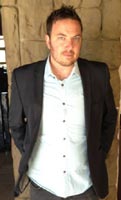A quick collision planning course

Since the 1960's there have been many forces of change affecting the media landscape and technological advancement in communication has certainly been one of the more recent developments. The industry has come a long way since the days of the manufacturing brands and the general adoption of Rosser Reeves' Unique Selling Proposition (USP). We now talk about global advertising agencies, through-the-line planning, transmedia storytelling and, engagement.
This has led to the general perception that "TV is dead" however, Bishop pointed to some staggering facts that might challenge this perception:
- Adults watch more TV now than they ever did (Nielsen Cross-Platform Report &Ofcom Report 2013)
- 11% of adults have looked online for information on a TV programme and 12% have talked about a programme on a social media platform (Ofcom Report 2013)
- 49% of UK adults claim to conduct other activities while watching TV on a weekly basis
- 92.8% of video viewing is on TV for US adults (Nielsen Cross-Platform Report 2013)
- Glee has been in the top 10 searched terms for TV programmes for 42 months (Google Trends)
The fact is, if TV is dead, nothing has replaced it yet.
To understand Collision Planning, Bishop says it is important to first understand the multi-screen effect. There are a number of studies hypothesizing the negative effect social media and device uptake has had on ordinary TV viewing however, Bishop points to a Neuroscience study funded by MEC and Network 7 in Australia. The study set out to understand what effect multi-screen consumption had on engagement and since audiences cannot accurately articulate what engagement means, Neuroscience was adopted as the methodology for the study since it objectively measures physiology. The study proved that, contrary to insights drawn out of multi-screen survey research, there was in fact a 7% increase in engagement when viewers simultaneously consumed multiple screens.
"Now that we understand the effect of social media on TV," says Bishop "we can begin planning for that moment of collision between the virtual and the real worlds."
The planning principle is based on optimizing the user's experience along their media consumption journey however, the collision doesn't necessarily have to occur between screens. He refers to two examples one being the World Wildlife Federation (WWF) who, in the interest of preserving our rain forests, got audiences to download and install an application that converts documents to .wwf files which prevent the user from printing. The moment of collision occurs when the printing screen launches and gives users the opportunity to convert to .wwf file to save a tree.
Updated at 7.18am on 2 September 2013













